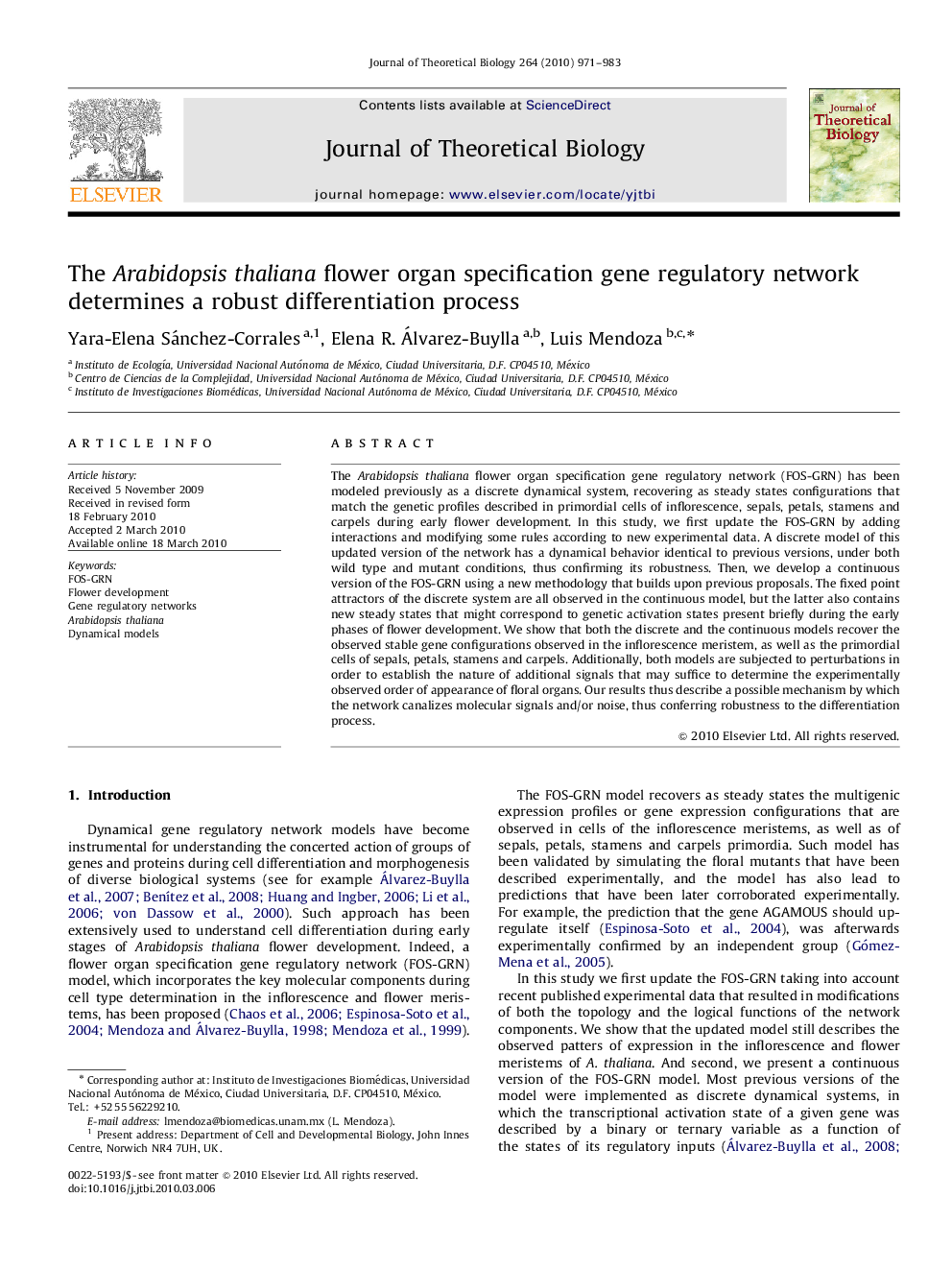| Article ID | Journal | Published Year | Pages | File Type |
|---|---|---|---|---|
| 4497766 | Journal of Theoretical Biology | 2010 | 13 Pages |
The Arabidopsis thaliana flower organ specification gene regulatory network (FOS-GRN) has been modeled previously as a discrete dynamical system, recovering as steady states configurations that match the genetic profiles described in primordial cells of inflorescence, sepals, petals, stamens and carpels during early flower development. In this study, we first update the FOS-GRN by adding interactions and modifying some rules according to new experimental data. A discrete model of this updated version of the network has a dynamical behavior identical to previous versions, under both wild type and mutant conditions, thus confirming its robustness. Then, we develop a continuous version of the FOS-GRN using a new methodology that builds upon previous proposals. The fixed point attractors of the discrete system are all observed in the continuous model, but the latter also contains new steady states that might correspond to genetic activation states present briefly during the early phases of flower development. We show that both the discrete and the continuous models recover the observed stable gene configurations observed in the inflorescence meristem, as well as the primordial cells of sepals, petals, stamens and carpels. Additionally, both models are subjected to perturbations in order to establish the nature of additional signals that may suffice to determine the experimentally observed order of appearance of floral organs. Our results thus describe a possible mechanism by which the network canalizes molecular signals and/or noise, thus conferring robustness to the differentiation process.
